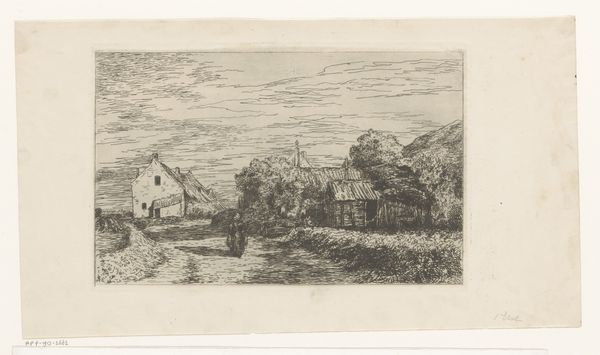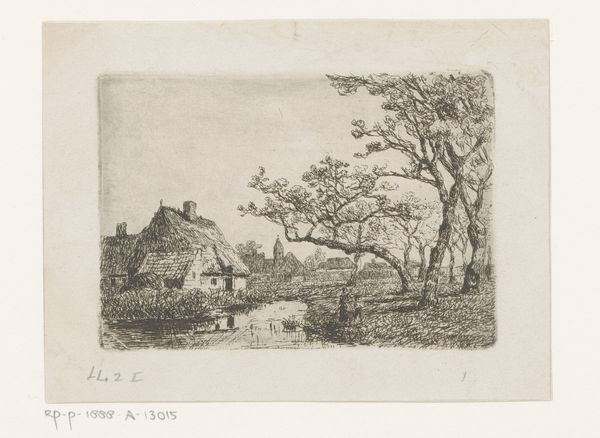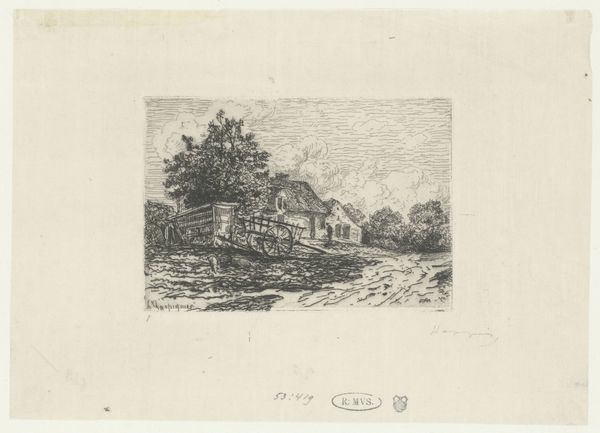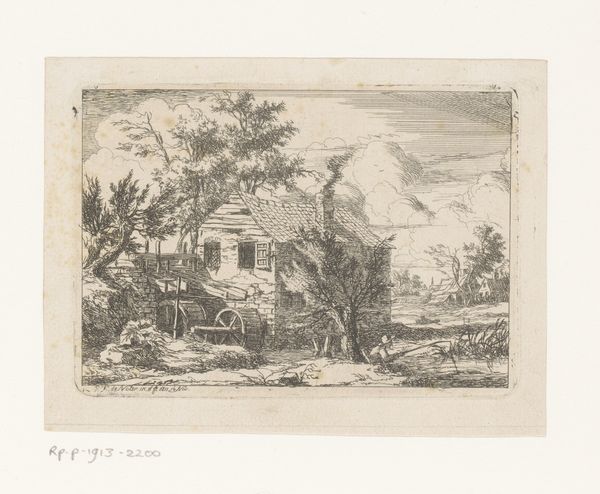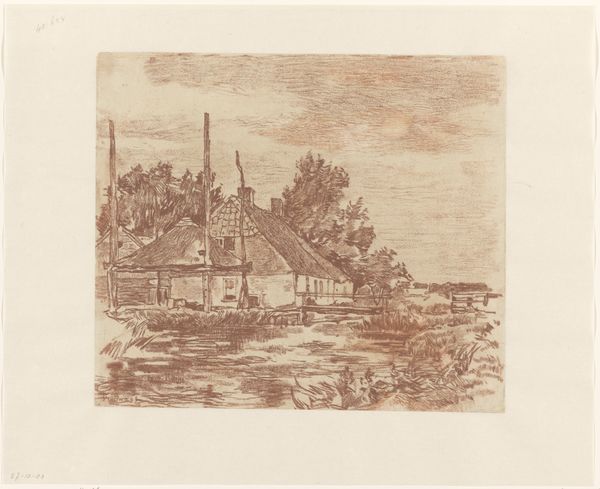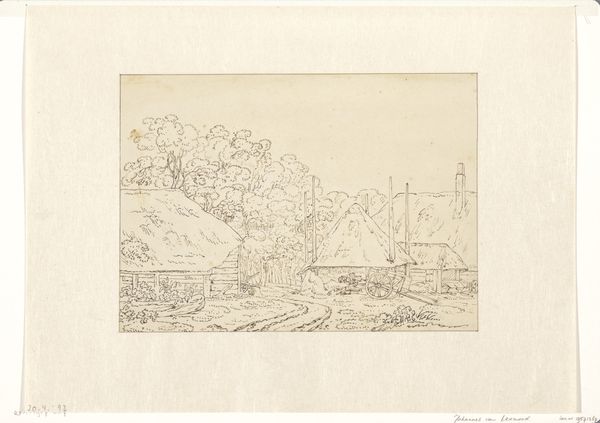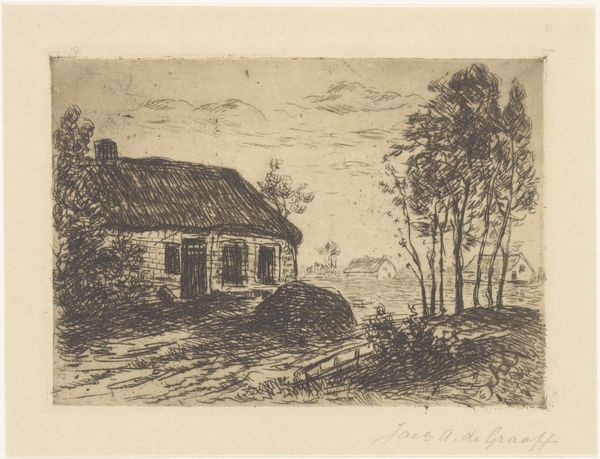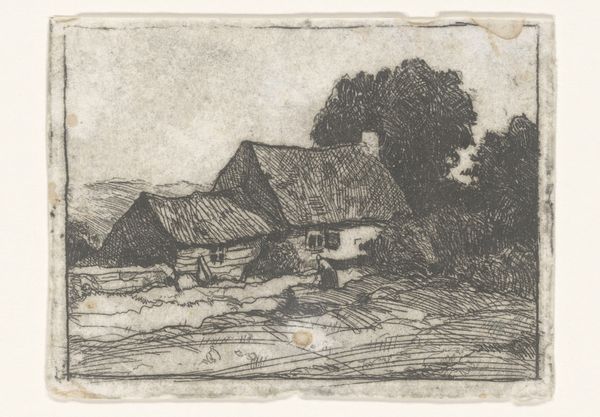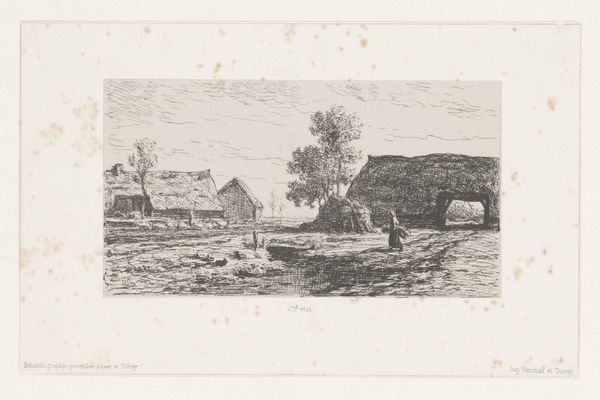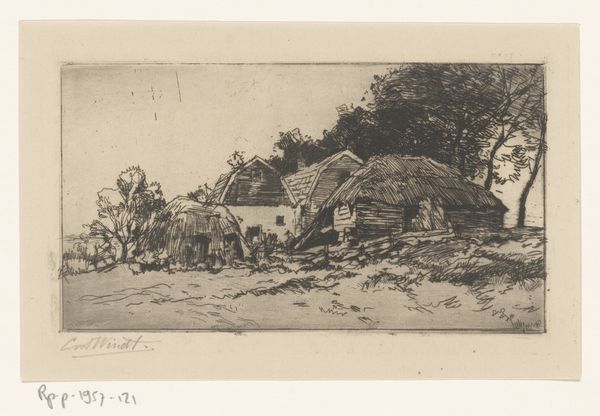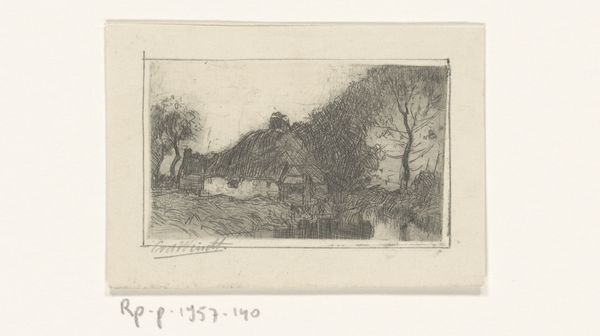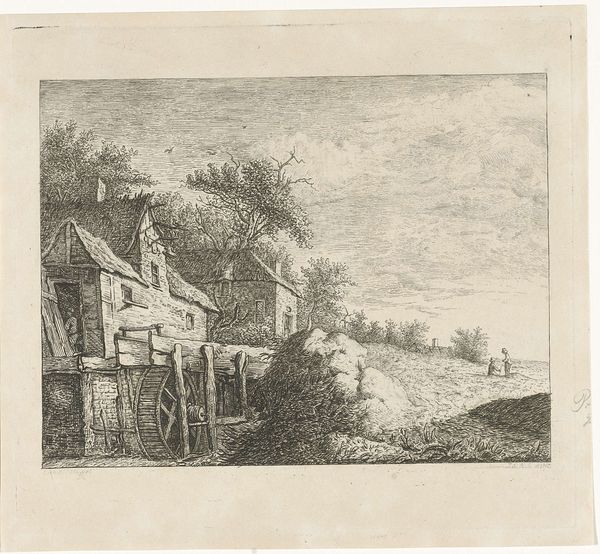
#
comic strip sketch
#
light pencil work
#
pencil sketch
#
old engraving style
#
personal sketchbook
#
ink drawing experimentation
#
pen-ink sketch
#
ink colored
#
sketchbook drawing
#
pencil work
Dimensions: height 105 mm, width 162 mm, height 130 mm, width 186 mm
Copyright: Rijks Museum: Open Domain
Etienne Bosch created this landscape of Holland, rendered in etching. Born in 1863, he lived through a time of significant socio-economic change in the Netherlands. As industrialization grew, the art world saw a rise in landscape art, often reflecting on idealized rural life. In Bosch's image, we see a traditional thatched-roof house, sturdy trees, and flat land under a broad sky. The textures of the etching give a tactile quality to the scene, inviting the viewer to feel the rough thatch and the solid earth. Does this image evoke a sense of national pride through its depiction of the Dutch countryside? Or is it a subtle commentary on the changing face of Dutch society? What does it mean to look at the land? What lives and what labors are made invisible in these idealized scenes? Consider the realities of rural life during Bosch's time, and how this image might gloss over the hardships faced by many. It's a reminder to look critically at how landscapes reflect both our love for the land and our complex relationship with its history.
Comments
No comments
Be the first to comment and join the conversation on the ultimate creative platform.
